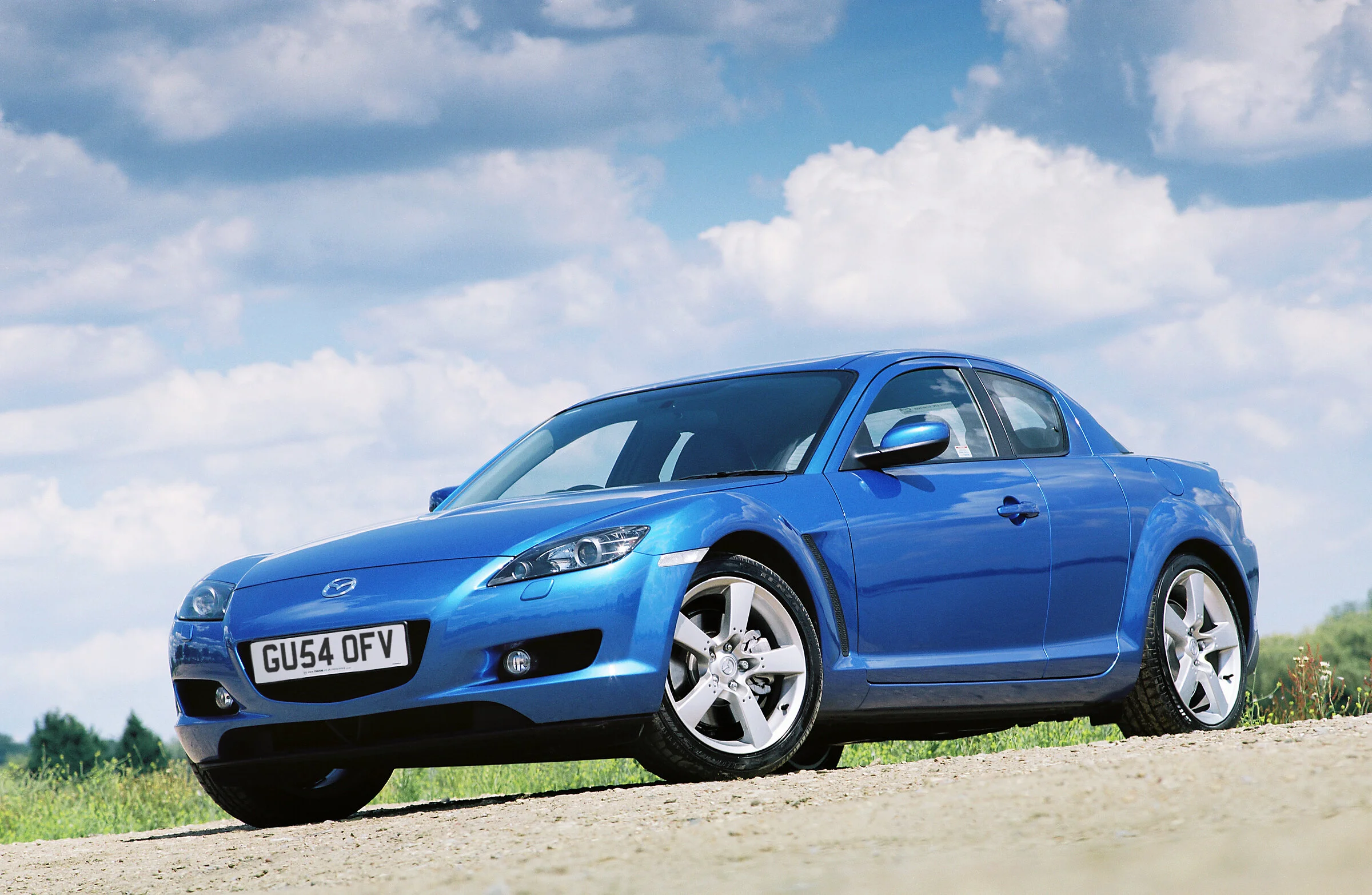Mazda RX-8: already a modern classic?
Every Monday we’re serving you up a delicious slice of pure postulation. That’s right, once a week we’re using our expertise and passion for the subject to predict what motors are destined for classic car stardom. This week, Parkers finance editor and former Classic Car Weekly news editor, Murray Scullion proposes the Mazda RX-8.
If you’re reading this franchise for the first time, you won’t know that some of our previous picks have been slightly left-field. But this week’s is surely a home-run? Admittedly, for some, it might be hard to imagine a cheap Japanese car becoming a dead-cert classic car. But have you seen the prices of Mazda RX-7s? Good condition Mk3s are north of £10,000... while mint ones are more like £20,000.
Mazda RX-8: History
Seeing as Mazda celebrated its 100th anniversary this year, it’d be rude not to go through a brief history of the company. In 1920 the Toyo Cork Kogyo Company was churning out Cork in its Hiroshima-based factory, before turning into a manufacturer of machine tools in 1929.
1931 saw the company switch to three-wheeled trucks before making its first ever passenger car - the Mazda R360 Coupe - in 1960. In between those years, Mazda’s Hiroshima base was amazingly left unscathed by the bomb that claimed 60,000-80,000 lives on 6 August 1945, mostly because it was shielded by a mountain.
In a very roundabout kind of way, we’re trying to say Mazda is a company not afraid of making changes and doing things its own way. Which is why by the late sixties it managed to create its own rotary engine. And in May 1967 it launched the Mazda Cosmo Sport - the world’s first dual-rotor rotary-engined car.
Mazda boffins loved developing high power from a small capacity engine. And enthusiasts loved revving the nuts out of a rotary to get peak power. Fast forward through the RX-2, RX-3, RX-5, and RX-7s and you magically get to the last rotary-engined car Mazda made. The RX-8.
The RX-8 was first made available in the UK in 2003 and soldiered on until 2010, although it did receive a big update in 2008. These R3 models feature different front and rear bumpers, bigger exhausts, and a rotary-style wheel-design, just in case you forget that you’re driving a spinny engined car.
Mazda RX-8: Rarity
Mazda RX-8 interior is hardly your run-of-the-mill
On the rarity front, the RX-8 has two angles that determine its rareness. A suicide-doored coupe with a rotary engine and mpg in the 20s was never going to sell as well as the Ford Fiesta. And while 17,000 RX-8s found homes in the UK, a huge chunk sold may well have found themselves on the scrapheap. The 1.3-litre rotary-engine (described as 2.6-litres for taxation purposes) in the RX-8 can be pretty troublesome.
Chief of its issues is starting when the engine is hot. Worn rotor-tips are generally the underlying problem. Fixing this issue isn’t cheap. A good specialist will charge around £5,000 to fix this. Considering at one time RX-8s were changing hands for £1,500, you can see why they’ve gone there.
The second reason is nothing of Mazda's doing, but more of the car enthusiast in general. Being a sports car with up to 231bhp, rear-wheel drive, a rev-limiter of 9,000rpm, as well as cheap prices, many have been ragged to within an inch of their lives. While others were turned into drift cars made for the track.
Special edition models cropped up too, which to the classic car world, means a lot. Most notable are the Prodrive developed PZ versions. 800 were made, and they featured Eibach springs, 18-inch OZ alloys, and different tailpipes.
If you’re after the last word in rareness, in 2006 Mazda became the world’s first company to commercially lease hydrogen powered rotary engine cars with the Mazda RX-8 RE. They were only available in Norway and fewer than 50 were made.
Why should you care?
The RX-8 brings £10k performance car thrills for close to a tenth of the price. Plus it’s rare. And it’s a genuinely practical four-seater with a 290-litre boot that’s actually usable.
And that engine. It’s buzzy and addictive and it rewards you for keeping your foot in. It lacks torque, so you need to make use of the five (for the lower powered model) or six-speed manual ‘box. And it’s rear-wheel drive for heaven’s sake.
Yes, it’s thirsty by modern car standards. 20mpg is considered quite good. And yes, it munches through oil at a similar rate to petrol. Ultimately then you should care because it offers the classic recipe of rear-wheel drive, manual gearbox but spices things up with an unconventional rotary engine. And while they’re expensive to repair, prices can only go one way as they ascend into classic cars.
The CCfS Classic Car Prediction
Like with most cars, early models will get the classic car rubber stamp of approval first. While the more powerful 231bhp versions (the RX-8 was also offered in 192bhp flavour) will be more sought after. Special edition models will have classic car owners cooing at their production numbers. Expect to hear, ‘Did you know my PX version is one of 320 made in Galaxy Grey,’ at RX-8 owners’ club meets.
Don’t expect to see any hydrogen powered ones popping up - they’ll all most likely end up in museums.
The view lesser cars will get of a hard-driven Mazda RX-8


